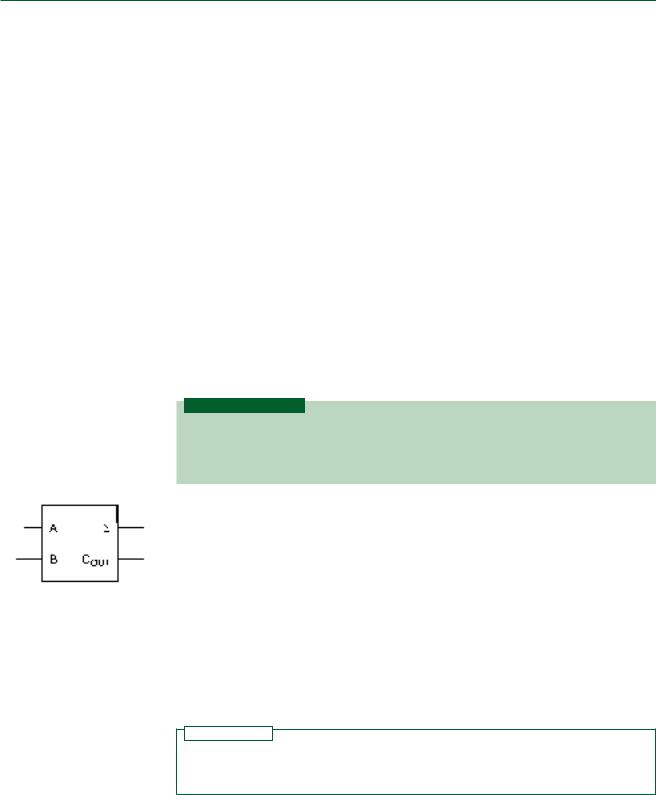
Digital design with CPLD applications and VHDL (R. Dueck, 2000)
.pdf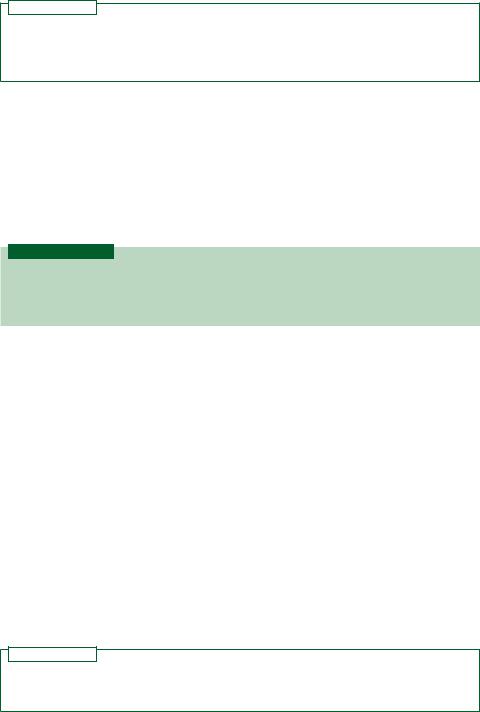
230 |
C H A P T E R 6 • Digital Arithmetic and Arithmetic Circuits |
The last five bits of the binary equivalent of 16 are the same in both the 5-bit and 8-bit numbers.
N O T E
The 8-bit number is padded with leading 1s. This same general pattern applies for any negative number with a power-of-2 magnitude. ( 2n n 0s preceded by all 1s within the defined number size.)
SECTION 6.3 REVIEW PROBLEM
6.5Write 32 as an 8-bit 2’s complement number.
6.6Write 32 as a 6-bit 2’s complement number.
Sign Bit Overflow
K E Y T E R M
Overflow An erroneous carry into the sign bit of a signed binary number that results from a sum or difference larger than can be represented by the number of magnitude bits.
Signed addition of positive numbers is performed in the same way as unsigned addition. The only problem occurs when the number of bits in the sum of two numbers exceeds the number of magnitude bits and overflows into the sign bit. This causes the number to appear to be negative when it is not. For example, the sum 75 96 171 causes an overflow in 8-bit signed addition. In unsigned addition the binary equivalent is:
10010111100000 10101011
In signed addition, the sum is the same, but has a different meaning.
0 |
1001011 |
|
|||||
0 |
1100000 |
|
|||||
1 |
0101011 |
|
|||||
(Sign bit) |
|
|
|
|
|
|
(Magnitude bits) |
|
|
|
|
||||
The sign bit is 1, indicating a negative number, which cannot be true, since the sum of two positive numbers is always positive.
N O T E
A sum of positive signed binary numbers must not exceed 2n 1 for numbers having n magnitude bits. Otherwise, there will be an overflow into the sign bit.
Overflow in Negative Sums
Overflow can also occur with large negative numbers. For example, the addition of 8010 and 6510 should produce the result:
8010 ( 6510) 14510
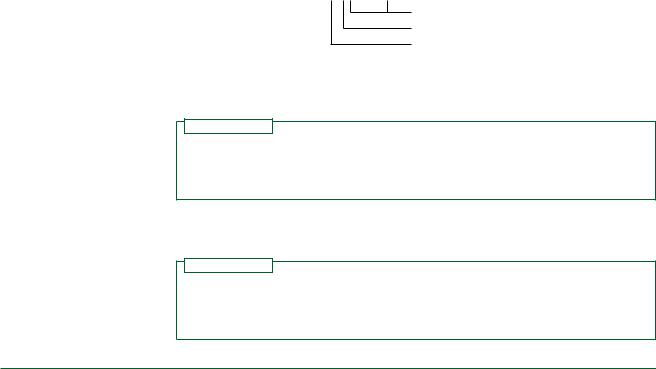

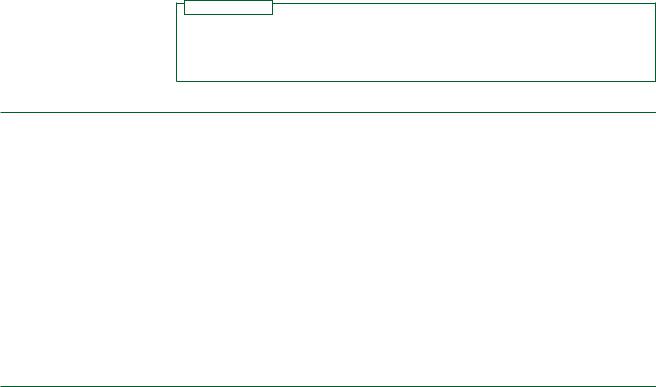
6.4 • Hexadecimal Arithmetic |
233 |
Microcomputer systems often use binary numbers of 8, 16, 20, or 32 bits. Rather than write out all these bits, we use hex numbers as shorthand. Binary numbers having 8, 16, 20, or 32 bits can be represented by 2, 4, 5, or 8 hex digits, respectively.
Hex Addition
Hex addition is very much like decimal addition, except that we must remember how to deal with the hex digits A to F. A few sums are helpful:
F 1 10
F F 1E
F F 1 1F
The positional multipliers for the hexadecimal system are powers of 16. Thus, the most significant bit of the first sum is the 16’s column. The equivalent sum in decimal is:
1510 110 1610 10H
The second sum is the largest possible sum of two hex digits; the carry to the next position is 1. This shows that the sum of two hex digits will never produce a carry larger than 1. The second sum can be calculated as follows:
FH FH 1510 151030101610 1410
10H EH
1EH
The third sum shows that if there is a carry from a previous sum, the carry to the next bit will still be 1.
N O T E
It is useful to think of any digits larger than 9 as their decimal equivalents. For any digit greater than 1510 (FH), subtract 1610, convert the difference to its hex equivalent, and carry 1 to the next digit position.
EXAMPLE 6.13 |
Add 6B3H A9CH. |
|
SOLUTION |
Hex |
Decimal Equivalents |
|
6B3 |
( 6) |
(11) ( 3) |
A9C |
(10) |
( 9) (12) |
|
(16) |
(20) (15) |
For sums greater than 15, subtract 16 and carry 1 to the next position:
Hex |
Decimal Equivalents |
|||||
(Carry) 11 |
( |
1) ( |
1) |
|
|
|
6B3 |
|
( |
6) |
(11) |
( 3) |
|
A9C |
|
(10) |
( |
9) |
(12) |
|
114F |
( |
1) ( |
1) |
( |
4) |
(15) |
Sum: 6B3H A9CH 114FH. |
|
|
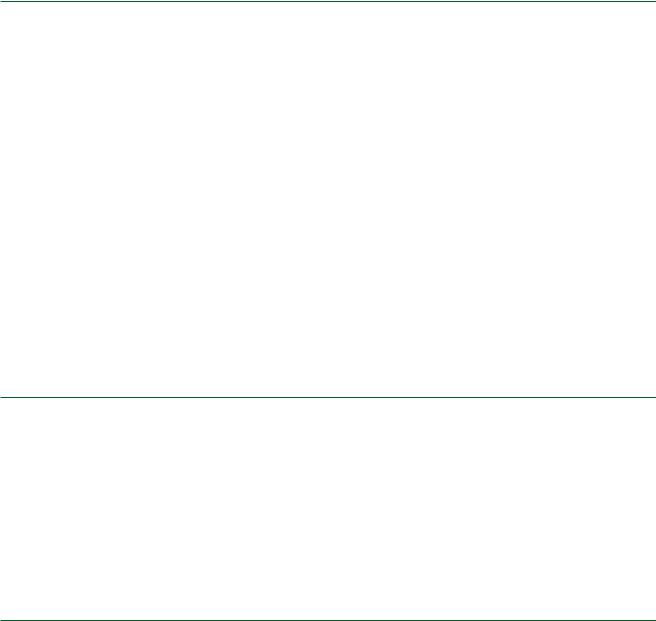
234 |
C H A P T E R 6 • Digital Arithmetic and Arithmetic Circuits |
Hex Subtraction
There are two ways to subtract hex numbers. The first reverses the addition process in the previous section. The second is a complement form of subtraction.
EXAMPLE 6.14 |
Subtract 6B3H 49CH. |
|
SOLUTION |
Hex |
Decimal Equivalent |
|
6B3 |
(6) |
(11) ( 3) |
49C |
(4) |
( 9) (12) |
To subtract the least significant digits, we must borrow 10H (1610) from the previous position. This leaves the subtraction looking like this:
Hex |
Decimal Equivalent |
|
|||
(Borrow) 1 |
|
|
|
|
|
6A3 |
(6) |
(10) |
(16 3) |
|
|
49C |
(4) |
( |
9) |
(12) |
|
217 |
(2) |
( |
1) |
( 7) |
|
|
|
|
|
|
|
The second subtraction method is a complement method, where, as in 2’s complement subtractions, we add a negative number to subtract a positive number.
Calculate the 15’s complement of a hex number by subtracting it from a number having the same number of digits, all Fs. Calculate the 16’s complement by adding 1 to this number. This is the negated value of the number.
EXAMPLE 6.15 |
Negate the hex number 15AC by calculating its 16’s complement. |
||
|
SOLUTION |
|
|
|
|
FFFF |
|
|
15AC |
|
|
|
|
EA53 |
(15’s complement) |
|
|
1 |
|
|
|
EA54 |
(16’s complement) |
The original value, 15AC, can be restored by calculating the 16’s complement of
EA54. Try it.
EXAMPLE 6.16 |
Subtract 8B63 55D7 using the complement method. |
SOLUTION Find the 16’s complement of 55D7.
|
FFFF |
|
55D7 |
|
|
|
AA28 |
(15’s complement) |
|
1 |
|
|
AA29 |
(16’s complement) |
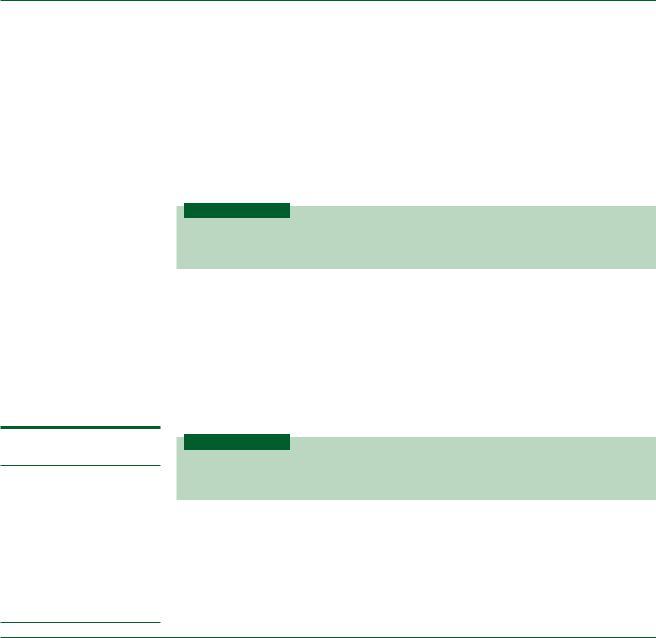
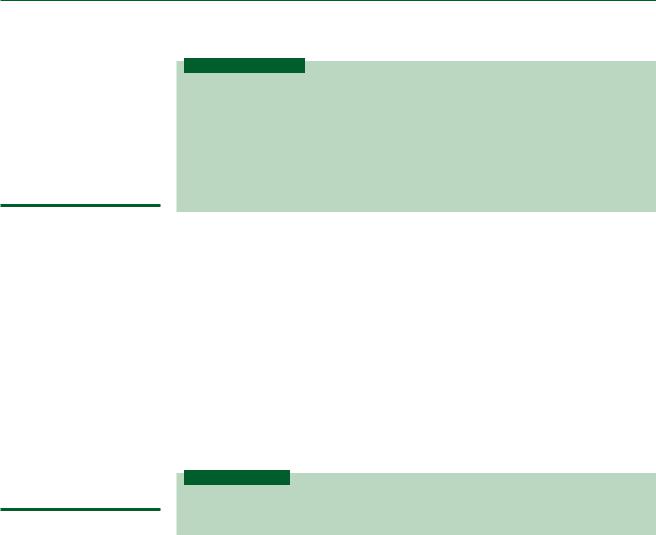

6.5 • Numeric and Alphanumeric Codes |
237 |
Another way to generate a Gray code sequence is to recognize the inherent symmetry in the code. For example, a 2-bit Gray code sequence is given by:
00
01
11
10
To generate a 3-bit Gray code, write the 2-bit sequence, then write it again in reverse order.
00
01
11
10
10
11
01
00
Add an MSB of 0 to the first four codes and an MSB of 1 to the last four codes. The sequence followed by the last two bits of all codes is symmetrical about the center of the sequence.
000
001
011
010
110
111
101
100
We can apply a similar process to generate a 4-bit Gray code. Write the 3-bit sequence, then again in reverse order. Add an MSB of 0 to the first half of the table and an MSB of 1 to the second half. This procedure yields the code in Table 6.4.
ASCII Code
K E Y T E R M S
Alphanumeric code A code used to represent letters of the alphabet and numerical characters.
ASCII American Standard Code for Information Interchange. A 7-bit code for
representing alphanumeric and control characters.
Case shift Changing letters from capitals (uppercase) to small letters (lowercase) or vice versa.
Digital systems and computers could operate perfectly well using only binary numbers. However, if there is any need for a human operator to understand the input and output data of a digital system, it is necessary to have a system of communication that is understandable to both a human operator and the digital circuit.
A code that represents letters (alphabetic characters) and numbers (numeric characters) as binary numbers is called an alphanumeric code. The most commonly used alphanumeric code is ASCII (“askey”), which stands for American Standard Code for Information Interchange. ASCII code represents letters, numbers, and other “typewriter characters” in 7 bits. In addition, ASCII has a repertoire of “control characters,” codes that
238 |
C H A P T E R 6 • Digital Arithmetic and Arithmetic Circuits |
are used to send control instructions to and from devices such as video display terminals, printers, and modems.
Table 6.5 shows the ASCII code in both binary and hexadecimal forms. The code for any character consists of the bits in the column heading, then those in the row heading. For example, the ASCII code for “A” is 10000012 or 41H. The code for “a” is 11000012 or 61H. The codes for capital (uppercase) and lower case letters differ only by the second most significant bit, for all letters. Thus, we can make an alphabetic case shift, like using the Shift key on a typewriter or computer keyboard, by switching just one bit.
Numeric characters are listed in column 3, with the least significant digit of the ASCII code being the same as the represented number value. For example, the numeric character “0” is equivalent to 30H in ASCII. The character “9” is represented as 39H.
The codes in columns 0 and 1 are control characters. They cannot be displayed on any kind of output device, such as a printer or video monitor, although they may be used to control the device. For instance, if the codes 0AH (Line Feed) and ODH (Carriage Return)
Table 6.5 |
ASCII Code |
|
|
|
|
|
|
|
|
|
|
|
|
|
|
|
|
|
|
|
|
|
|
|
MSBs |
|
|
|
|
|
|
|
|
|
|
|
|
|
|
|
|
000 |
001 |
010 |
011 |
100 |
101 |
110 |
111 |
|
|
(0) |
(1) |
(2) |
(3) |
(4) |
(5) |
(6) |
(7) |
LSBs |
|
|
|
|
|
|
|
|
|
|
|
|
|
|
|
|
|
|
|
0000 |
(0) |
NUL |
DLE |
SP |
0 |
@ |
P |
’ |
p |
0001 |
(1) |
SOH |
DC1 |
! |
1 |
A |
Q |
a |
q |
0010 |
(2) |
STX |
DC2 |
″ |
2 |
B |
R |
b |
r |
0011 |
(3) |
ETX |
DC3 |
# |
3 |
C |
S |
c |
s |
0100 |
(4) |
EOT |
DC4 |
$ |
4 |
D |
T |
d |
t |
0101 |
(5) |
ENQ |
NAK |
% |
5 |
E |
U |
e |
u |
0110 |
(6) |
ACK |
SYN |
& |
6 |
F |
V |
f |
v |
0111 |
(7) |
BEL |
ETB |
′ |
7 |
G |
W |
g |
w |
1000 |
(8) |
BS |
CAN |
( |
8 |
H |
X |
h |
x |
1001 |
(9) |
HT |
EM |
) |
9 |
I |
Y |
i |
y |
1010 |
(A) |
LF |
SUB |
* |
: |
J |
Z |
j |
z |
1011 |
(B) |
VT |
ESC |
|
; |
K |
[ |
k |
{ |
1100 |
(C) |
FF |
FS |
, |
|
L |
\ |
l |
| |
1101 |
(D) |
CR |
GS |
- |
= |
M |
] |
m |
} |
1110 |
(E) |
SO |
RS |
. |
|
N |
^ |
n |
|
1111 |
(F) |
SI |
US |
/ |
? |
O |
— |
o |
DEL |
Control Characters: |
|
|
|
|
|
|
|
||
NUL–NUll |
|
|
|
DLE–Data Link Escape |
|
||||
SOH–Start of Header |
|
|
|
DC1–Device Control 1 |
|
||||
STX–Start Text |
|
|
|
DC2–Device Control 2 |
|
||||
ETX–End Text |
|
|
|
DC3–Device Control 3 |
|
||||
EOT–End of Transmission |
|
|
|
DC4–Device Control 4 |
|
||||
ENQ–Enquiry |
|
|
|
NAK–No Acknowledgment |
|
||||
ACK–Acknowledge |
|
|
|
SYN–Synchronous Idle |
|
||||
BEL–Bell |
|
|
|
|
ETB–End of Transmission Block |
||||
BS–Backspace |
|
|
|
CAN–Cancel |
|
|
|||
HT–Horizontal Tabulation |
|
|
|
EM–End of Medium |
|
|
|||
LF–Line Feed |
|
|
|
SUB–Substitute |
|
|
|||
VT–Vertical Tabulation |
|
|
|
ESC–Escape |
|
|
|||
FF–Form Feed |
|
|
|
FS–Form Separator |
|
|
|||
CR–Carriage Return |
|
|
|
GS–Group Separator |
|
||||
SO–Shift Out |
|
|
|
RS–Record Separator |
|
||||
SI–Shift In |
|
|
|
|
US–Unit Separator |
|
|
||
SP–Space |
|
|
|
|
DEL–Delete |
|
|
||
|
|
|
|
|
|
|
|
|
|
